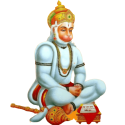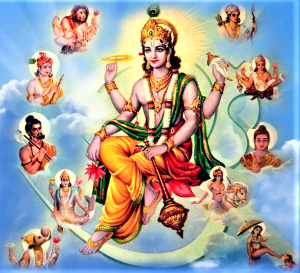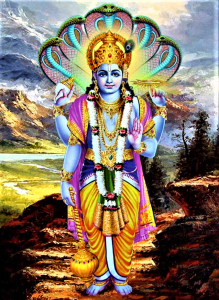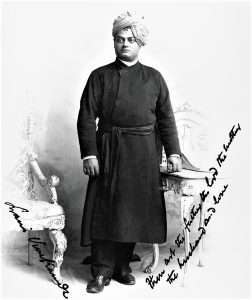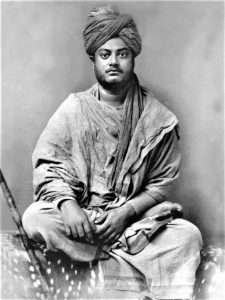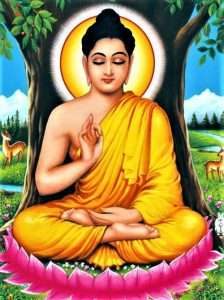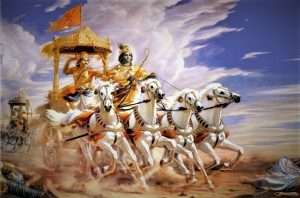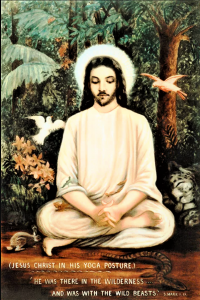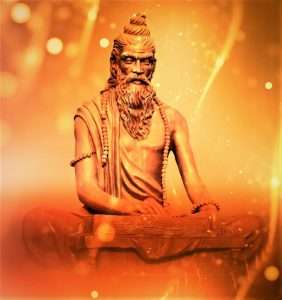The History of Yoga
History of Yoga is a very debatable topic. It does not provide sound clarity about the idea and at the same time there are so many opinions from different schools of thought. In the modern time, we have got certain specific ways to study the history of Yoga. This brings some intellectual satisfaction only but the evidence based clarity is still unavailable. Therefore the blog is also filled with elements of unclarity however, we have tried out best to keep a balance between the ancient resources as well as the modern ones. Hope the readers might study it as one of the many opinions only instead of final conclusion about history of Yoga.
Yoga is believed to have originated with the very dawn of civilization. Its antiquity is untraceable. According to some Yogic lore, God Shiva is the first protagonist of Yoga and the great Guru. Nevertheless, we look into the facts about Yoga in some of the ancient scriptures. For the purpose, we begin with the knowledge of the everlasting presence of Yoga and truth. The great scripture Srimad Bhagavad Gita says –
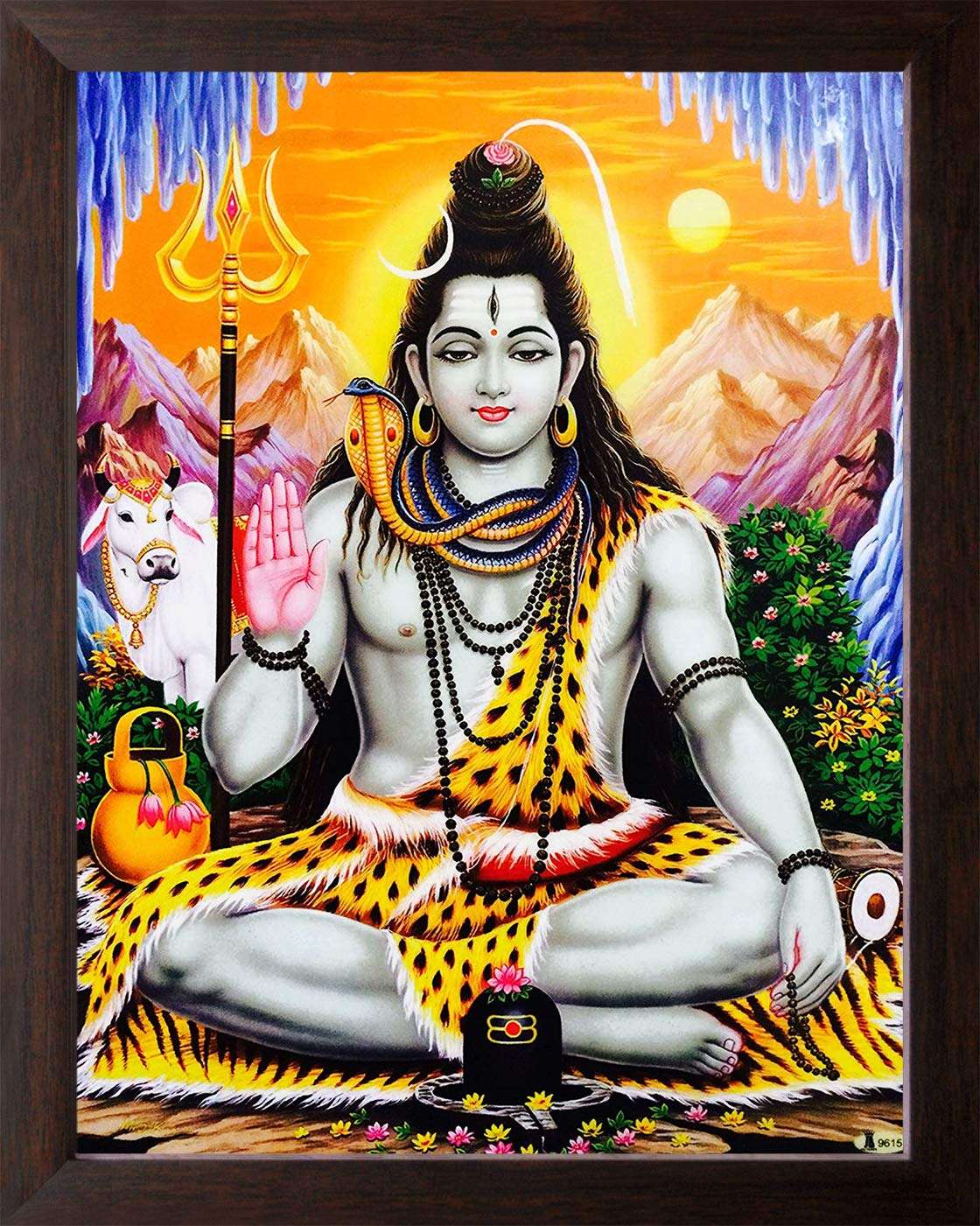
Bhagavad Gita (Chapter 2, Verse 16) –
Sanskrit –
नासतो विद्यते भावो नाभावो विद्यते सत:|
उभयोरपि दृष्टोऽन्तस्त्वनयोस्तत्त्वदर्शिभि:|| 2.16||
Transliteration –
Nasato vidyate bhavo nabhavo vidyate satah|
Ubhayorapi drishtontastvana yos tattva darshibhih|| (2.16)||
Translation – The unreal has no existence and the real has no cessation. This has verily been observed by the seers of the truth.
The above-mentioned verse means that truth/knowledge never gets lost. It is ever present. Hence the life, existence and evolution are a continuous process. It goes through transition but it never gets lost. So is the knowledge of Yoga.
Parampara of Yoga – (Tradition of Yoga) – The history of Yoga owes to the tradition of Yoga. The Sanskrit word, “Parampara” means lineage of knowledge. Through tradition the knowledge is passed on from one generation to the another. The tradition also breaks and again revived. The reference to this comes in the Gita (4.1,2,3), where God Krishna discusses a tradition of Yoga was initiated by God Krishna. He says –
Sanskrit –
श्रीभगवानुवाच |
इमं विवस्वते योगं प्रोक्तवानहमव्ययम् |
विवस्वान्मनवे प्राह मनुरिक्ष्वाकवेऽब्रवीत् ||4.1||
Shri Bhagavan uvacha
Imam vivasvate yogam proktavan aham avyayam|
Vivasvan manave praha manur ikshvakave ’bravit||4.1||
Translation –
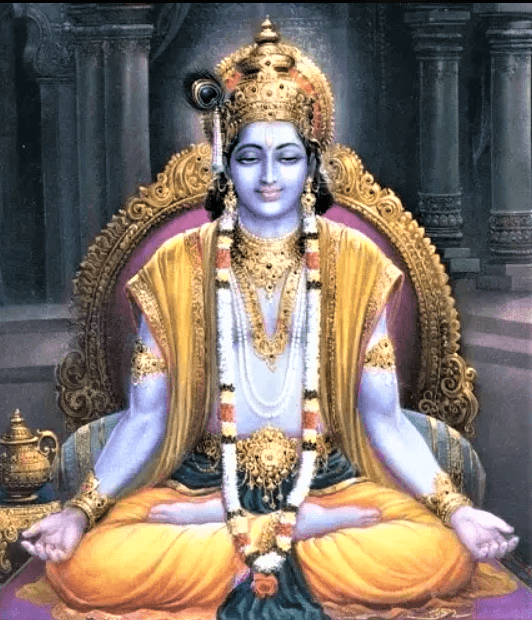
God Krishna says, “I taught this eternal knowledge of Yoga to the Sun God Vivasvan, who passed it on to Manu (ancient king) and Manu instructed it to Ikshavaku (another king).
God Krishna originally made Vivasvan His first disciple to understand the knowledge of Yoga described in Srimad Bhagavada Gita.
Sanskrit –
एवं परम्पराप्राप्तमिमं राजर्षयो विदु:|
स कालेनेह महता योगो नष्ट: परन्तप||4.2||
Transliteration –
Evam parampara-praptam imam rajarshayo viduh|
Sa kaleneha mahata yogo nashtah parantapa||4.2||
Translation –
O subduer of enemies, through tradition the saintly kings (royal sages) received this knowledge of Yoga. But with the lapse of time, the knowledge of Yoga became lost.
Sanskrit –
स एवायं मया तेऽद्य योग: प्रोक्त: पुरातन:|
भक्तोऽसि मे सखा चेति रहस्यं ह्येतदुत्तमम्||4.3||
Transliteration –
Sa evayam maya te dya yogah proktah puratanah|
Bhaktosi me sakha cheti rahasyam hyetad uttamam||4.3||
Translation –
The same ancient knowledge of Yoga, which is a supreme secret, I am revealing unto you, because you are My devotee and friend.
Kinds of Parampara (Kinds of Tradition) – There are many traditions of Yoga of which three are the chief. They are –
- Brahma – Gyana Yoga and Raja Yoga
- Visnu – Bhakti Yoga
- Shiva – Tantra (Hatha Yoga).
All knowledge comes from God and He imparts the Knowledge to great teachers through whom we all receive. This is how a tradition is maintained. Under one tradition many other traditions also evolve in course of time. Therefore, we have many traditions of Yoga. When a tradition breaks then God or any enlightened soul revives the knowledge of Yoga and thus this appearance and disappearance of the knowledge continue in succession.
Antiquity of Yoga and its history
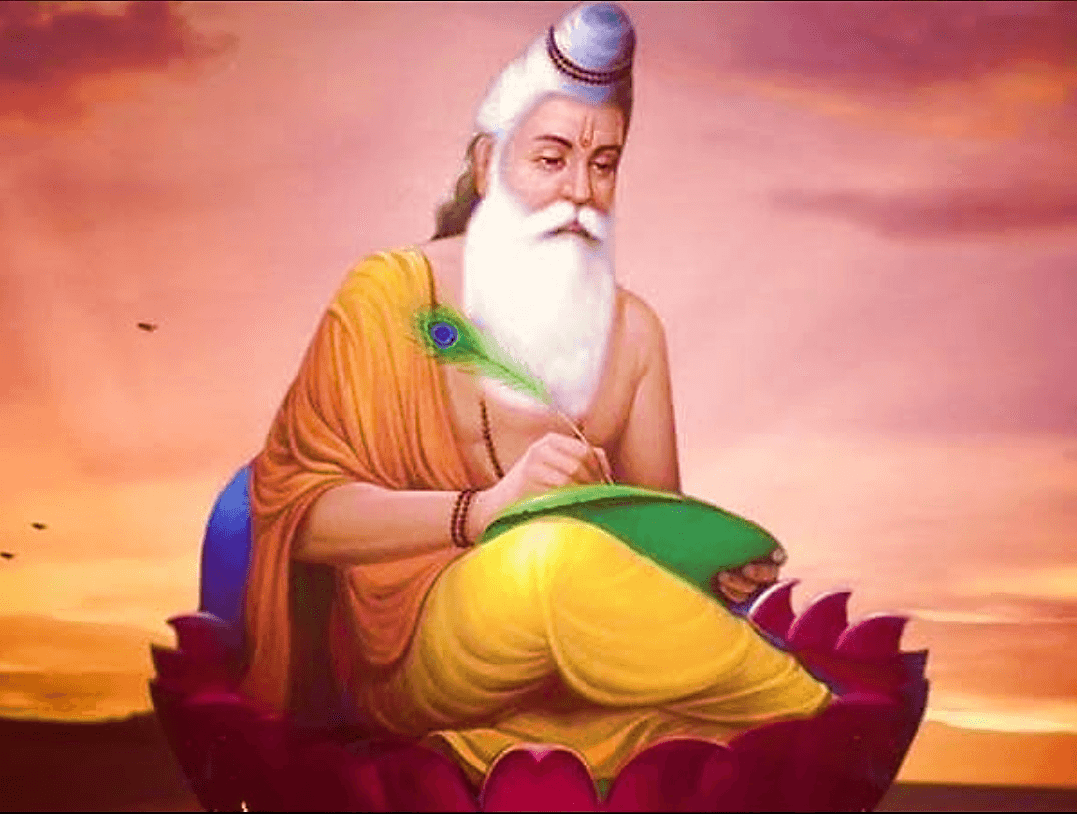
With the continuous evolutionary process, knowledge also evolves. At certain stage of life, there is a requirement of specific knowledge for ultimate satisfaction and this is Yoga alone. There is a great controversy about how and when Yoga evolved. Nevertheless, there are some substantial proofs which can form some basis to study history of Yoga. The history of Yoga can conveniently be divided into the following broad categories –
- Pre -Vedic/Ancient Period
- Vedic Period (5000 BC – 7000 Years BC)
- Pre – classical Period (3000 BC – 4000 BC)
- Classical Period (2000 BC)
- Post – classical Period (500 BC – 1700 AD)
- Modern Period (1800 AD)
- Present Period (1970 AD)
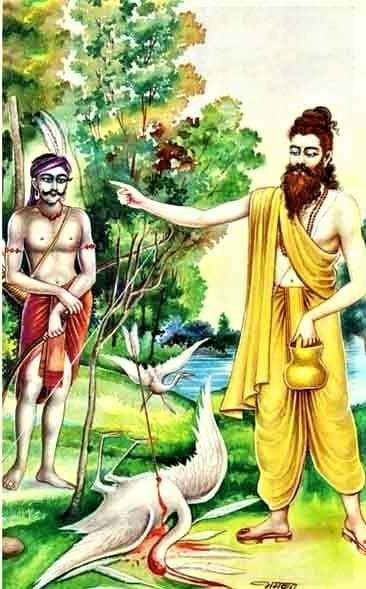
1. Pre-Vedic/Ancient Period (First verse of Sanskrit) – According to some ancient recourses, the first scripture of humanity with ample elements of Yoga as well is, “Manu Smriti” which was written by the ancient king Manu. The scripture at the moment is the most debatable because of some of its misunderstood topics. However, this is supposed to be the most ancient scripture. Next to this is “Ramayana” which was composed by sage Valmiki. There is a very famous incident regarding the origin of “Ramayana”. Valmiki (an ancient sage) was going to the river Ganges for his daily ablutions. A disciple by the name Bharadwaja was carrying his clothes. On the way, they came across the river Tamsa stream. Looking at the stream, Valmiki said to his disciple, “Look, how clear is this water, like the mind of a good man! I will bathe here today.” When he was looking for a suitable place to step into the stream, he saw a crane couple mating. Valmiki felt very pleased on seeing the happy birds. Suddenly, hit by an arrow, the male bird died on the spot. Filled by grief, its mate screamed in agony and died of shock. Valmiki’s heart melted at this pitiful sight. He looked around to find out who had shot the bird. Nearby, He saw a hunter with a bow and arrows. Valmiki became very angry with him. Suddenly His lips opened and he cried out in Sanskrit –
मा निषाद प्रतिष्ठां त्वमगमः शाश्वतीः समाः।
यत्क्रौञ्चमिथुनादेकमवधीः काममोहितम्॥
Transliteration –
Ma nisada pratistha tvamagamah sasvatih samah|
Yat kraunchamithunadekam avadhih kamamohitam||
Translation – O Nisada! You will find no rest for the long years of Eternity. For you killed a bird in love and unsuspecting.
Birth of the first Epic of the world – Emerging spontaneously from Valmiki’s rage and grief, this is considered to be the first shloka in Sanskrit literature. Valmiki later composed the entire Ramayana with the blessings of Lord Brahma in the same meter that issued forth from him as the first shloka. The Ramayana is the first poem or Adi Kavya which contains 24000 Sloka (Verse). It has great message which coveys elements of Yoga in a more lucid manner.

Another Text Yoga Vashistha – Yoga Vashistha is a philosophical text attributed to Valmiki, although the real author is unknown. The complete text contains over 29,000 verses. The short version of the text is called Laghu Yogavasistha and contains 6,000 verses. The text is structured as a discourse of sage Vashistha to Prince Ram. The text consists of six books.
The 1st book presents Rama’s frustration with the nature of life, human suffering and disdain for the world.
The 2nd describes, through the character of Rama, the desire for liberation and the nature of those who seek such liberation.
The 3rd and 4th books assert that liberation comes through a spiritual life, one that requires self-effort, and present cosmology and metaphysical theories of existence embedded in stories. These two books are known for emphasizing free will and human creative power.
The 5th book discusses meditation and its powers in liberating the individual.
The 6th book describes the state of enlightened and blissful God Ram.
Tantra – During the Pre-Vedic time period Tantra also was a parallel system. According to some legends, several Thousand years ago, on the banks of the lake Kantisarovar in the Himalaya, Adi Yogi Shiva granted the knowledge to Saptarishi or “seven sages”. The sages brought this Yogic science to different parts of the world, including Asia, the Middle East, Northern Africa and South America. Modern scholars have found so many things like statues which are parallel to those existing in the past across the globe. The conversation between God Shiva and Goddess Parvati mostly form the main works on Tantra. The lineage is that the Tantrik knowledge was revealed to first Goddess Parvati and then to other 7 sages and so on.
Scriptures in Tantra – The important books in Tantra are termed as Agama and Nigama. Agama are spoken by Shiva to Parvati and Nigama are spoken by Parvati to Shiva. Shiva, Shakti, Visnu, Surya and Ganesh are the main deities of Tantra. Nigama is also another name of Veda.
2. Vedic (5000 BC to 7000 BC) – The Sanskrit word Veda means “knowledge”. Veda are considered the highest order of scriptures. They are the most authoritative. Veda contains all kinds of knowledges both for material fulfilment and spiritual illumination. The tradition of Vedic knowledge was oral which means it was heard from the knower and by hearted. Later the great Sage Veda Vyasa codified the Veda into the form of Scriptures. There are four different Vedas. They are –
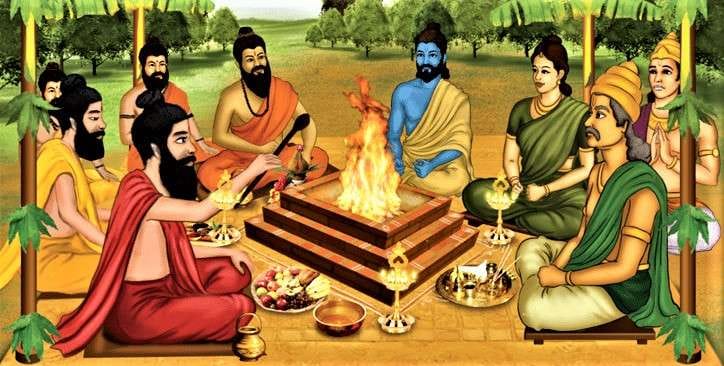
Rig Veda – It has hymns that are in praise of a higher power/deities.
Yajur Veda – It has knowledge of sacrifice/rituals/Yagya
Sama Veda – It has knowledge of chants/songs/music
Atharva Veda – It has knowledge of spells, prayers, charms
These are followed by four Upaveda or sub-Veda – Ayurveda, Arthaveda, Dhanurveda, and Gandharvaveda. Further down the line are six upanga or components – Shiksha, Kalpa, Vyakarana, Nirukta, Chandas, and Jyotisha. The earliest recorded mention of the word ‘Yoga’ is in the ancient Indian text, the Rig Veda – this body of knowledge. In the Atharva Veda, again there is a mention of the importance of the control of breath. It is difficult to pinpoint exact dates because in the beginning, the Vedas were, only, orally passed on from one generation to another. Written records came much later. However, even before this, in the Indus-Saraswati civilization (dating to 2700 BC), several seals and fossils have been found, with figures performing Yoga Sadhana. This suggests that Yoga was known and practiced even in those early stages of civilization. We look at some quotes from the Vedas hereunder –
A. Sa dya no Yoga aa bhuvat sa raye sa puram dhyay
Gamad vaaje bhira sa nah (Riga Samhita 1.5.3, Samveda 1.2.10.3, Atharvaveda 20.69.1)
Meaning – For perfection in Yoga grace of God is essential.
Further in Vedas

B. Hiranyagarbha samvart taagre, bhutasya jaatah patirek aasit
Sah dadhar prithvih dyam ulemam, kasmai devay havisa vidhema (Riga Veda, 10.121.1)
Meaning – Hiranyagarbha came first who is the father of all beings. He brought earth and heaven life planes. We worship that God who is beyond expression.
In the Mahabharata, it’s been confirmed that –
C. Samkhasya vakta Kapilah Paramarsi sa uccayate
Hiranya garbha Yogasya prokta Nanya puratanah (12.349.65)
Meaning – Kapil is the great speaker (knower) of Samkhya and Hiranyagarbha is the speaker (knower) of Yoga. There is no more ancient speaker.
“Yoga came from the embryo of Brahma, the Creator, who rose up from the navel of God Vishnu – and none others. Brahma himself came out of Vishnu and hence the first preceptor of Yoga is God Vishnu, who imparted it to Brahma.”

In the Brahma Samhita it is stated –
Yac chaksur esa savita sakala grahanam
Raja samasta sura murtir asesa tejah
Yasya gyana bhramati sambhrta kalachakro
Govindam adipurusam tamaham bhajami
Translation – God Brahma said, “Let me worship Govinda (Krishna), who is the Supreme Personality of Godhead, the original person and under whose order the sun, which is the king of all planets, assume immense power and heat. The sun represents the eye of the God and traverses its orbit in obedience to His order.”
In the Mahabharata (Santi-parva 348.51-52) we can trace out the history of the Gita as follows –
Treta yugadau cha tato vivasvan manave dadau manus cha lokabhritartham sutayeksvakave dadau ikshavakuna cha kathito vyapya lokan avasthitah
Translation – “In the beginning of the Treta Yuga, the knowledge of the union with Supreme God (Yoga) was delivered by Vivasvan to Manu. Manu, being the father of mankind, gave it to his son Maharaja Ikshavaku (the ancient King and forefather of the Raghu dynasty in which God Ramachandra incarnated). Therefore, Bhagavad Gita existed in the human society from the time of Maharaja Ikshavaku.”
3. Pre – classical Yoga (3000BC to 4000 BC) – The Upanishad took birth in this era. They explain the meaning hidden in the Veda, elaborating on the workings of the mind and spirit through personal teachings. They espouse meditation and mantra recitation towards the ultimate goal of attaining enlightenment. Out of the 108 Upanishad, there are 20 Yoga Upanishad. These talk about different Yogic techniques, like Pranayama and Pratyahara, breathing exercises, sound and meditation. According to some scholars, Tantra evolved during these times.
Various Upanishads, 6 Darshana – (Nyaya, Vaishesik, Samkhya. Yoga, Poorva Mimamsa and Uttar Mimamsa) and Tantra flourished and became main practices.
4. Classical Yoga (2000 BC) – Samkhya philosophy and Yoga Sutra dominated still as the main practices. Maharshi Patanjali, considered the Father of Yoga, was the first one to systematize the practices of Yoga. Through his Yoga Sutra, he disseminated the meaning of Yoga, and the knowledge it has to offer. This Yoga was called Raja Yoga. He formulated the Astanga Yoga or the eight limbs of Yoga, which included Yama, Niyama, Asana, Pranayama, Pratyahara, Dharana, Dhyana, and Samadhi. The earliest available Sanskrit commentary on it is the Yoga Bhashya (Speech on Yoga) attributed to Vyasa. During the same time period, God Mahavira and God Buddha emerged and their teachings formed the early basis for Yoga Sadhana. While God Mahavira spoke of attaining salvation and freedom through meditation, God Buddha spoke of specific postures and meditation to attain enlightenment.
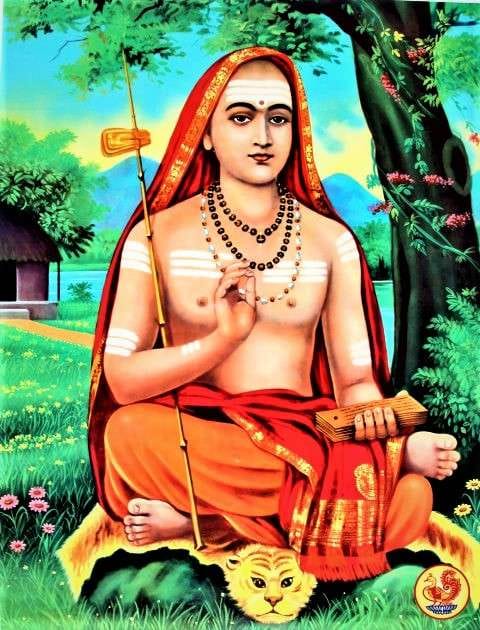
5. Post – classical Yoga (500 BC to 1700 AD) – In this era, many sages and philosophers such as Adi Guru Shankaracharya contributed to the development and continuation of Raja Yoga, Gyana Yoga and other kinds of Yoga. With their teachings of Yoga one can achieve Nirvana or liberation. Additionally, meditation was also considered vital to control the mind. Other great saints like Tulsidas, Surdas, Ravidas, Mirabai and Purandaradasa also contributed to the development of Yoga. Hatha Yoga with is mostly practised now a days was also popularized in this period. Most of the Asana that we practice today are part of Hatha Yoga. Emergence of some greats saints and Yogis during this time period is undermentioned –
Nath Order – The history of the order of Nath Yogi goes way back to the remote past. Today it is almost impossible to determine when and how the followers of Gorakshanath appeared. According to some facts, around 8 to 9 AD it began.
Main Guru in Nath Order – Matsyandranath, Gorakshanath, King Bhartrihari and others.
Other famous saints – Ramanandacharya, Ramanujacharya, Ballabhacharya, Samartha Ramdas, Kavir Das, Nanak, Narsimha Mehta, Chaitanya Mahaprabhu etc.
The geography of order of Nath Yogi in India is very wide. We can find the representatives of Natha Yogi all over India, Nepal, Bangladesh, Pakistan, Afghanistan, Burma and Sri-Lanka. Probably, in every city in India there is a temple of Natha. The main temple is in Uttar Pradesh state, in Gorakhpur, the city which got its name after Gorakshanath. The important texts like – Siddha Siddhanta Paddhati, Hatha Yoga Pradipika, Goraksha Vacana Sangraha, Goraksha Upanishad, Yoga Bija, Shiva Samhita, Gheranda Samhita, Yoga Martanda and many others are great works of Natha Yogi. Some of them are considered to be written by Gorakshanath. The total amount of texts is about 50. Almost all of them are preserved and studied and still remain actual in our daily life.
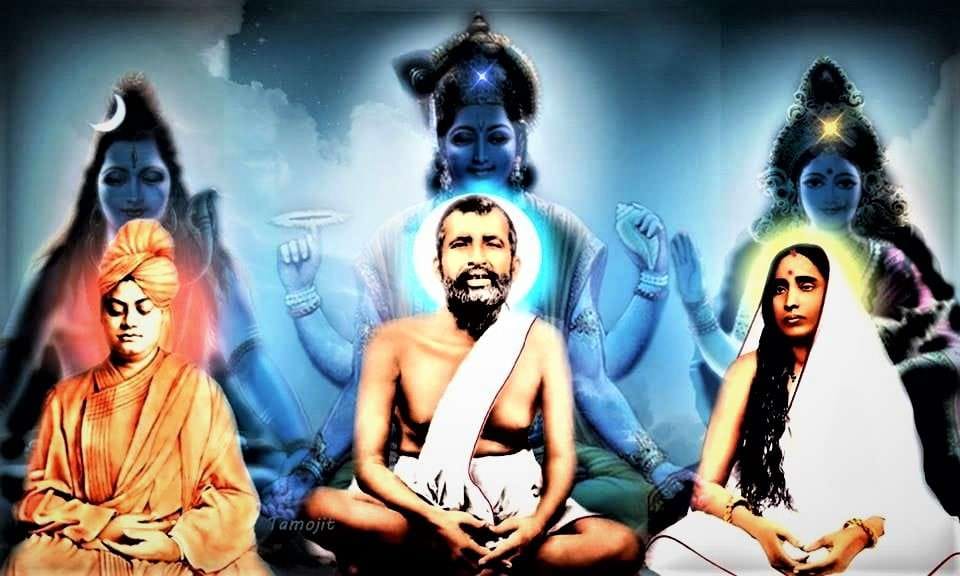
6. Modern Period (1700 AD to 1900+ AD) – This is the era of Ramkrishna Paramhamsa, Maa Sharada and Swami Vivekananda. The history of modern Yoga is widely known to begin with the Parliament of Religions held in Chicago in 1893. It was at the congress that the great Swami Vivekananda made a huge and lasting impression on the American people and people from all parts of the world. He taught Vedanta and service to humanity as worship of God. After Swami Vivekananda, the most popular teacher was Paramahansa Yogananda, who arrived in America in 1920 and taught Kriya Yoga. Then Swami Rama Tirtha, a former mathematics teacher came to the United States in 1902 and inspired many people with the spirit of Yoga. Following him in 1919, Yogendra Mastamani came to America and demonstrated the power and elegance of Hatha Yoga. Other renowned modern Yogis of Indian origin are Sri Aurobindo (the father of Integral Yoga), Ramana Maharshi (an unparalleled master of Gyana Yoga), Swami Ramdas (popularized Bhakti Yoga, Mantra Yoga and holy names of God), Swami Nityananda (Kundalini Yogi) and his disciple Swami Muktananda, who attracted attention of international seekers of truth. During 1960s and 1970s, many swamis trained by the great Himalayan master Swami Sivananda opened their schools in Europe and America. Among the famous disciples of Swami Sivananda are Swami Vishnudevananda (author of The Complete Illustrated Book of Yoga), Swami Satchitananda (founder of Integral Yoga), Swami Sivananda Radha (founder of Yasodhara Ashram, Canada), Swami Satyananda (founder of Bihar School of Yoga) and Swami Chidananda (a saintly figure who directed the Sivananda Ashram in Rishikesh, India).
Since the early 1930s until his departure in 1986, Jiddu Krishnamurti guided thousands of philosophically minded westerners with his eloquent talks. Among his close circle of friends were Aldous Huxley, Christopher Isherwood, Charles Chaplin and Greta Garbo. Bernard Shaw described Krishnamurti as the most beautiful human being he ever saw.
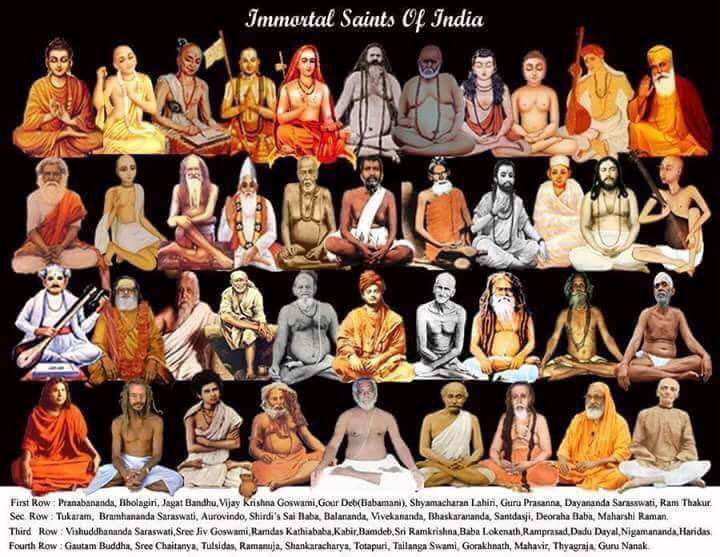
In the mid-1960s, the Western Yoga movement boosted through Maharishi Mahesh Yogi, mostly because of his association with the world famous Beatles. Maharshi popularized Transcendental Meditation (TM). In 1965, Shrila Prabhupada arrived in New York and founded the International Society for Krishna Consciousness (ISKCON). In 1969, Yogi Bhajan started teaching Kundalini Yoga to the Western students. In the 1970 and 1980s, Acharya Rajneesh (now known as Osho) taught his own form of meditation called Dynamic meditation. Through his meditation techniques and speech, he impacted international people. Sri Krishnamacharya and his two students B.K.S. Iyengar and Patta Bhai Jois taught very physical form of Asana. Swami Satyananda (a Tantra master who established the well-known Bihar School of Yoga) authored numerous books on practical aspects of Tantra and Yoga. There are also many other great people in Yoga, both famous and hidden, who represent Yoga in one form or another. They are also contributing to the growth and development of Yoga.
7. Present period (1970 AD) – Until around 1970 AD, Yoga was a means of cultivating virtues and spiritual evolution. Later people starting going stray from the spiritual goal and shifted to material fulfilment. Therefore certain aspects of Yoga became popular and were taught for physical health, relaxation and some form of preventive measures. Swami Sivananda was a pioneer to this approach as He wrote books on both levels – spiritual awakening and physical as well as mental health. Later Swami Ram and other Yogis taught Yoga for physical and mental health. In the long run when Yoga reached in the hands of western people, they made Yoga a product. This resulted into the business of Yoga and exercise as the most important part of Yoga. This approach boosted with the approach of B.K.S. Iyengar, Patta Bhai Jois and Vikram who mostly taught Asana and many form of exercise as Yoga. Eventually Yoga emerged as an industry and at present time Yoga is mostly a popular business. Because of this industrial approach, branding of Yoga also started. There are many modern brands of Yoga such as Iyengar Yoga, Ashtanga Yoga. Yin Yoga, Acro Yoga, Aerial Yoga, Hot Yoga, Sup Yoga, Naked Yoga, Flow Yoga and so on. At the present time, there are still some of the authorised institutions, ashrams, Yoga teachers and Yogis who are maintaining the purity of Yoga and its spirit.
Conclusion – The history of Yoga is a very complex topic. No opinion about it can be considered to be the final one. There are many points of view from which we can consider it as a very inspirational topic. Each point of view has its one beauty and truth. We have brought our own understanding based on the facts we have found useful. It has some similarities with other opinions and and some new information. The reader is requested to look at it as one of the many opinions. We hope that the topics on the history of Yoga bring some insight to those who come across this.
With Love and Gratefulness (Founder Rohit Kumar)
Source – Ancient scriptures, internet resources, lectures of Swami Satyananda and personal study.
Hari Om Tat Sat!

